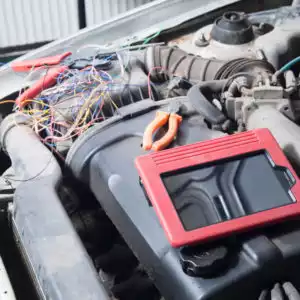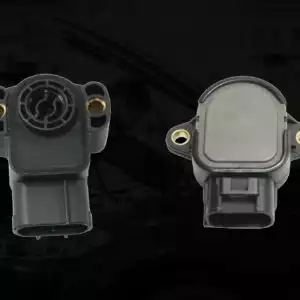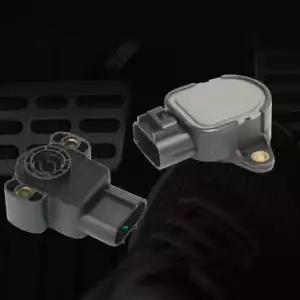The throttle position (TP) sensor monitors throttle position and sends its findings to the powertrain control module (PCM). But like any other sensor inside your engine, the TP sensor could develop problems over time. P2125 is a trouble code related to a fault in this sensor.
What Does the P2125 Code Mean?
Diagnostic trouble code P2125 stands for “Throttle/Pedal Position Sensor/Switch ‘E’ Circuit.” The PCM logs it when it detects a voltage range that’s outside factory specifications from the sensor.
Once the PCM detects that a voltage signal is outside the normal range, it’ll trigger the P2125 code. “E” refers to a particular circuit or circuit area within the sensor.

More About the Throttle Position Sensor
The voltage values might vary depending on the vehicle’s year, make, and model. So the signal voltages that could trigger the code could vary per vehicle. You can refer to your vehicle’s manual or talk to a licensed mechanic for more information on this.
Note that the PCM is aware that any significant variation in throttle position corresponds to a change in manifold pressure (MAP). For comparison purposes, the PCM on some models will track MAP and TPS operation.
For more technical information that can help you find the best approach to solving P2125 and similar codes, read our discussion about accelerator pedal position sensors.
Note: The definition of the P2125 code can be different depending on the vehicle manufacturer. Consult the appropriate repair manual or repair database for the exact code definition.
What Are the Common Causes of the P2125 Code?
- Sticking throttle pedal return spring (not common)
- Corrosion in the MAP or APPS Harness connector
- Harness issues
- Malfunctioning APPS or ECM/PCM

What Are the Common Symptoms of the P2125 Code?
- Illuminated check engine light
- Poor idle quality
- Stalling
How to Diagnose the P2125 Code
The P2125 is a general error code, but that doesn’t mean that there’s a universal way to diagnose and clear it. Keep in mind that the way a vehicle is designed tends to vary based on its manufacturer.
If you’re not sure how to determine what’s causing the problem, it’s best to take your vehicle to an auto repair shop for a proper diagnosis. Otherwise, you can do it yourself.
How to Fix the P2125 Code
Resolving a P2125 error code can be challenging, especially if you don’t have the knowledge and equipment to clear the code. If that’s the case, your best option is to let a licensed mechanic address the issue for you.
But if you’re confident that you can resolve the trouble code on your own, make sure you have the right repair guide before you get started. Find vehicle-specific guides from resources like Chilton or an ALLDATA subscription.
Any information provided on this Website is for informational purposes only and is not intended to replace consultation with a professional mechanic. The accuracy and timeliness of the information may change from the time of publication.



















